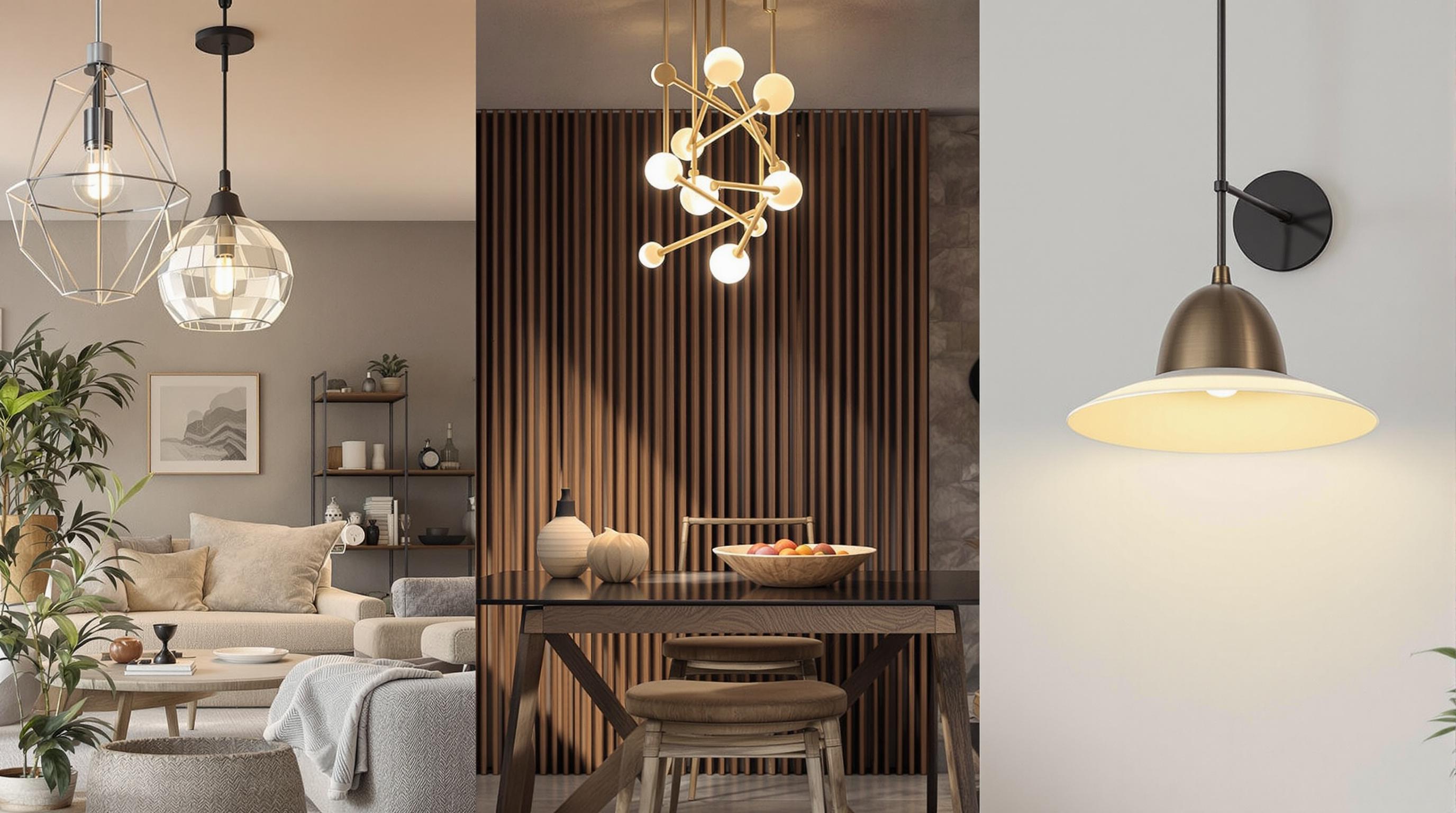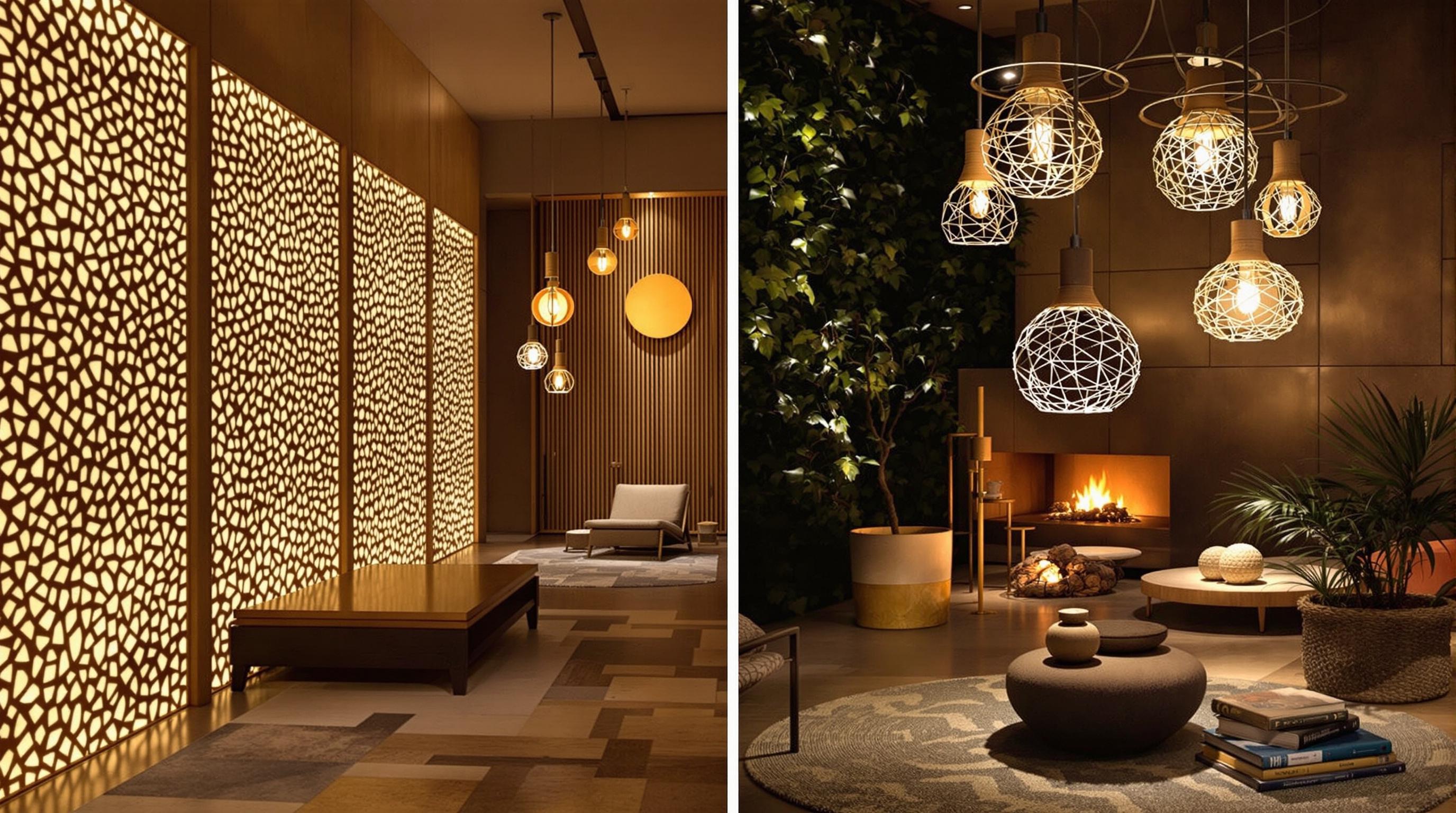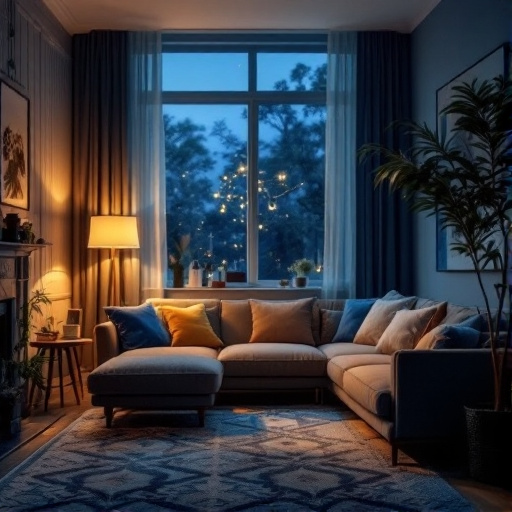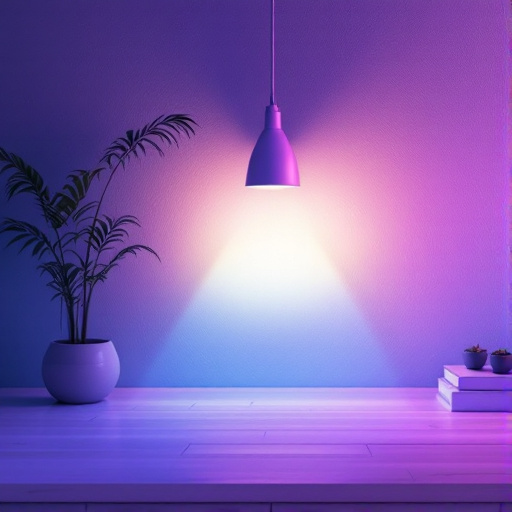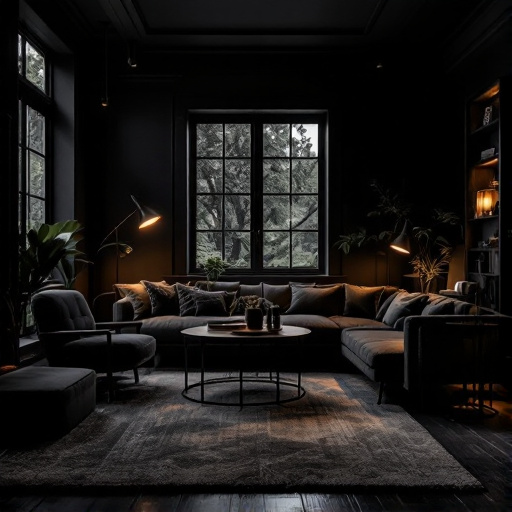Featured Articles
- 12 Innovative Home Lighting Ideas Inspired by Nature’s Hidden Patterns and Ancient Traditions
- 7 Best Human-Centric Lighting Fixtures Released Since 2019 That Truly Transform Your Living Space
- Illuminate Your Mood: How Color Psychology in Home Lighting Can Affect Your Emotions and Well-Being
- Illuminate Your Mood: The Surprising Psychology of Color in Home Lighting Choices
- "Illuminate Your Mood: The Surprising Science of Light Colors and Emotional Well-Being at Home"
Illuminating Mental Health: How the Right Home Lighting Can Transform Your Mood and Well-Being
Illuminating Mental Health: How the Right Home Lighting Can Transform Your Mood and Well-Being
Imagine a home that not only shelters you but also nurtures your emotional well-being. The right lighting choices can significantly affect your mood, mental clarity, and overall quality of life—here’s how!
The Psychology of Light
Light is more than just a physical phenomenon; it deeply influences our psychology and behavior. According to a study published in the journal “Environmental Psychology,” natural light exposure is closely associated with an increase in happiness and productivity levels (Küller, R. et al., 2006). Conversely, living in dimly lit spaces can foster feelings of sadness and lethargy, making it essential to choose lighting wisely.
Natural Light: Nature’s Mood Booster
Ever wonder why you feel more energetic on sunny days? Natural sunlight boosts serotonin levels in the brain, a neurotransmitter that elevates mood and fosters feelings of well-being. The “Sunlight Effect” can explain why seasonal affective disorder (SAD) often affects individuals heavily during winter months when natural light is scarce. An interesting study revealed that exposure to bright light in the morning can improve mood and behavior in adults with SAD (Glickman, G., 2020).
Maximizing Sunlight in Your Home
To maximize natural light, consider the following strategies:
- Use mirrors: Position mirrors across windows to reflect light deeper into your space.
- Keep windows clear: Regularly clean your windows to let the maximum amount of sunlight in.
- Select lighter colors: Choose light-colored paints or décor that reflect light rather than absorb it.
In fact, a home designed by architect Andrew McCulloch incorporated extensive skylights and large windows, significantly enhancing the mood of its inhabitants. One resident reported, “The amount of light I wake up to significantly changes my morning outlook. I feel more alive!”
Artificial Lighting: Setting the Scene
If your home doesn't get enough natural light, don’t fret! You can still create an uplifting atmosphere with artificial lighting. The type, intensity, and color of light can dramatically affect your mood. For instance, warm white light (around 3000K) is typically flattering and can make your space feel cozy and inviting, whereas cooler white light (above 4000K) can encourage alertness—great for workspaces!
Task Lighting and Ambient Lighting
It’s crucial to understand the difference between task lighting and ambient lighting. Task lighting focuses on specific areas for activities such as reading or cooking, while ambient lighting creates an overall atmosphere. Using both types effectively can improve focus and comfort simultaneously.
Humorously, I remember my friend Daisy, who decided to use a bright fluorescent light in her living room for a more energetic vibe. Instead, it turned her warm space into what felt like a hospital waiting room—far from cozy! Don’t be like Daisy; find the right balance that suits your needs!
Color Temperature and Its Impact
Did you know that the color of your lights can significantly impact how you feel? The color temperature of light is measured in Kelvin (K), and it plays a crucial role in setting the tone of a space. For instance, warm tones (2700K–3000K) induce relaxation, while cooler tones (3500K–4100K) promote alertness and productivity, indicating that the Christmas lights popping up in stores by November might just keep you cheery through the holiday season! (Eliot, P., 2019)
Creating Zones with Lighting
Another effective technique is zoning your home through lighting. This involves creating different light sources for distinct areas—soft, warm lights in relaxation zones like bedrooms, and brighter, cooler lights in work zones like your home office. This differentiation gives you the flexibility to curate your mood according to the activities at hand.
A Case Study: Transforming Workspaces
In 2015, a groundbreaking study conducted by researchers at the University of Michigan found that carefully chosen lighting in workplace environments could improve productivity by up to 20%. In co-working spaces, they implemented a mix of bright white lights for shared workspaces and softer, warm colors for relaxation and networking areas. The results were profound—workers felt happier and more efficient, leading to increased collaboration and creativity.
The Emotional Warmth Factor
Many people overlook the emotional component of lighting. Have you ever entered a room illuminated by harsh, flickering lights? It’s like walking into a horror film. Instead, reverting to spaces lit with warm, soft lights not only makes one feel safe but also nurtures a sense of belonging. This notion resonates particularly with people who utilize their homes as spaces for socializing, creating special moments over dinner or bonding over games.
Lighting for Different Activities
Here’s where the fun part begins! Choosing the right lighting can also be activity-oriented. For instance:
- Reading: Use reading lamps with adjustable brightness to safeguard your eyesight while immersing in a good book.
- Cooking: Utilize bright, direct under-cabinet lighting to enhance food preparation.
- Relaxation: A good dose of warm fairy lights might just become your secret weapon for unwinding.
Mindfulness: Lighting to Enhance Your Practice
Mindfulness practices, like meditation, can also benefit from a well-lit space. According to a recent survey, over 60% of practitioners found that their meditation sessions were improved by an ambiance filled with soft, warm lights.
Picture this: soft golden lights gently illuminating your meditation corner, perhaps with candles flickering in rhythm with your breath—an atmosphere that encourages tranquility. This environment can ground you, making it easier to let go of daily stresses. Take it from me, an 18-year-old just starting to discover self-care—creating a serene environment with appropriate lighting has been a game-changer!
Adjustable Lighting: Flexibility is Key
One of the best advancements in home lighting technology is adjustable smart lighting systems. These systems allow you to change the brightness, color, and even the hue of your lights with the click of a button (or even through your voice!). Having the ability to switch from bright whites during work hours to warm, soft tones in the evening can help maintain your mood throughout the day.
Lighting and Sleep
Good sleep hygiene can also be greatly influenced by how you manage your home lighting. Research indicates that exposure to blue light from screens before bed can throw off your circadian rhythm, leading to restless nights. Adjusting the lighting intensity and color to warmer tones as bedtime approaches can help prepare your body for sleep. Consider using dimmers to transition smoothly from activity to relaxation times.
Creating Community and Connection
The communal aspect of lighting shouldn’t be underestimated. Warm, inviting spaces encourage people to gather—be it family dinners or game nights. As anecdotal evidence suggests, during the pandemic, many found solace in virtual get-togethers, often replicating warm lighting settings reminiscent of social spaces. With the right lighting, even a simple video call can feel like a cozy meet-up!
A Call to Action
As you're heading into your next home improvement project, think about how lighting plays a role in your emotional landscape. Ask yourself: How does each room feel? Is it fostering positivity, or dragging you down into darkness? Recognizing and altering the lighting schemes in your home can profoundly affect your mental health and well-being.
Conclusion: Your Bright Future Awaits
Remember, light is not just a tool—it's a companion in the journey of life, influencing your mood, productivity, and connections. By understanding the nuances of lighting and implementing suitable designs in your home, you can create an environment that fosters positive mental health. Embrace the transformative power of light, and illuminate your life in ways you never thought possible!
